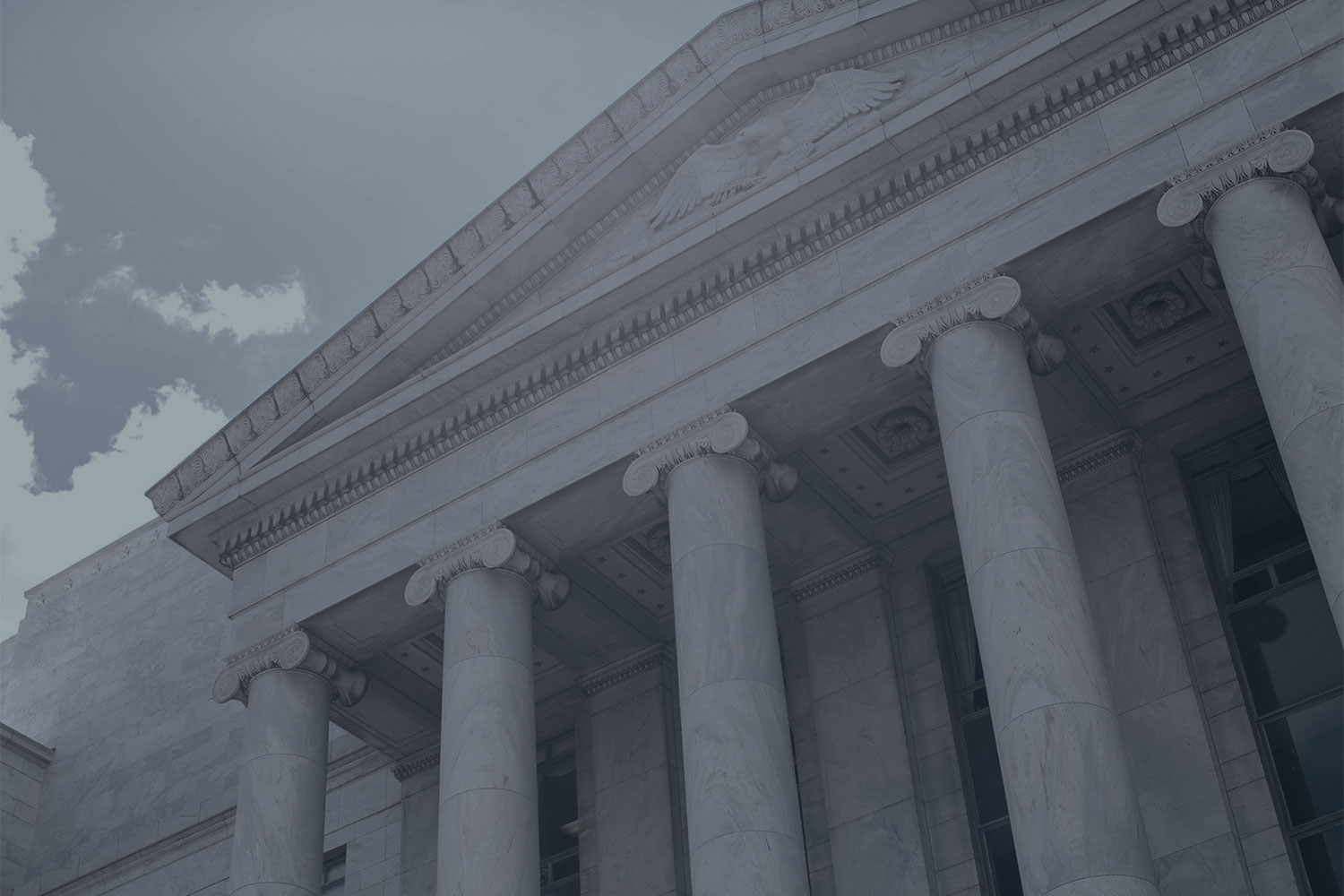Jeanette Manning, NAGTRI Program Counsel
The prescription drug and opioid epidemic has taken a shattering toll on our nation in every way imaginable and in a relatively short period of time. Significant numbers of overdoses and deaths, the catastrophic mixing of harmful synthetic opioids with heroin and opioids like fentanyl and carfentanyl, children left orphaned or neglected, families losing loved ones, burgeoning medical crises at emergency rooms, HIV outbreaks, and first responders being exposed to or ingesting dangerous materials and often administering life-saving drugs to repeat users are just a few of the challenges this epidemic has wrought. The epidemic manifests itself in a variety of ways, but it is far from being a new phenomenon.
For decades, the United States has suffered the devastating effects of drug epidemics, stemming from excessive use and abuse of heroin, powder cocaine, and crack cocaine. Communities have been ravaged and families have been damaged from addiction and public responses to these issues in myriad ways such as having, for example, a significant increase of incarcerated people, overdoses, deaths and homicides, public health and safety challenges for law enforcement officials, and medical and lost personnel costs. However, the impact of the opioid epidemic has impacted our nation in a wholly magnified way given the daily number of overdoses and deaths by overdose.
The overdose statistics for opioids and other drugs illuminate dire circumstances. In a brief 15-year period from 2000-2015, over a half million people died from drug overdoses.1 The recorded numbers during this period are staggering, but the most concerning data bears that the figures are rising, unfortunately. In 2015 alone, the Centers for Disease Control and Prevention (CDC) recorded the drug overdose rate at 16.3 per 100,000 people resulting in 52,404 fatal overdoses.2 Despite these shocking figures of drug overdoses generally, the opioid epidemic belongs in a special category because it alone is claiming more lives than other drugs with nearly 100 people dying daily in 2015.3 In simpler terms, an estimated six out of every 10 drug overdoses are from opioid use. And, yet, even these incredible numbers appear to be rising. The most recent data suggests that as many as 142 people a day are now dying from opioids.4 In the first two quarters of 2016 (data typically lags by one year), the death rates were 18.9 and 19.3 per 100,000.5 The last available recording period in 2016 reveals that in the last quarter, a record number of deaths occurred at 19.9 per 100,000.6
Inarguably, the United States has had and continues to have a major drug problem. However, our progressively increased use of opioids has catapulted us into an alarming crisis. This epidemic, in particular, and unlike other drugs, has taken an emotional, social, and economic toll on virtually every ethnic and racial group between the prime ages of 25-44 and in almost every state.7 Although no state is immune from these deaths, some have been affected more relentlessly than others. Thus, the natural question remains to be answered: what must be done to resolve or lessen the effect of the opioid and prescription drug epidemic given its far reaching and seriously devastating impact on such large swaths of the population?
As to be expected when a problem reaches epidemic proportions, differing views exist on how best to answer the above-posed question and do so in ways that are effectual. The suggested responses to successfully address opioid challenges are no different. Some experts and government officials believe a public safety or law enforcement response that cracks down on users, sellers, and prescribers is the necessary approach. Others support devoting attention and resources to increased, quality drug treatment and life-saving measures that instead focus on a medical and public health response. Both approaches are critical to addressing the opioid crisis, but one must not be pursued at the expense of the other. This crisis must be seen as both a public safety and a public health issue, with both communities working together to tackle the problem.
Given the National Attorneys General Training and Research Institute’s (NAGTRI) work with both law enforcement and public health officials, it sought to change the conversation and steer it away from simply responding to this epidemic with a carrot and stick approach where the two disciplines operated in silos. We saw an important need for law enforcement to partner with professionals in the public health community. The solution for developing the most promising practices is for those two communities, who for far too long have worked in isolation, to collaborate. Accordingly, NAGTRI partnered with the Association of State and Territorial Health Officials (ASTHO), a national public health association, to raise awareness, share information, provide expertise, and bring together practitioners and experienced attorneys and public health officials. Together, these groups worked to develop effective solutions aimed at tackling this opioid epidemic. Through generous funding made available via the State Attorney General Consumer and Prescriber Education Grant Program, NAGTRI and ASTHO hosted a November 2016 symposium dedicated to examining issues associated with the opioid epidemic.8
The joint symposium titled, Bridging the Gaps: Reducing Prescription Drug and Opioid Abuse and Misuse Summit (the Summit), provided three days of information sharing to bridge legal, law enforcement, public health, consumer protection, and medical gaps for critical stakeholders responsible for producing valuable strategies. The symposium also provided a forum that brought together stakeholders to close information gaps, encourage collaboration to reduce the amount of misinformation among consumers, improve prescribing methods, enhance enforcement efforts, and learn about the medical impact addiction and misuse has on users. At full capacity, over 200 people from multi-disciplinary backgrounds registered for the event. Local, state, and federal experts—with medical, law enforcement, public policy, substance use and misuse, public health, and legal backgrounds—shared best and promising practices and participated in breakout sessions. The participants were equipped with information aimed at combatting this epidemic in their respective jurisdictions.
To identify and address gaps, discussion during the Summit highlighted beneficial steps that have been taken across the country in addition to noting and exploring the tragic effects the epidemic has had on communities, families, and states. Topics included the emotional, social, and physical trauma on children losing parents, parental figures, and guardians at record rates; the science behind addiction and drug misuse and its detrimental effect on the brain and the alteration of the brain’s circuitry; regulatory changes and opioid prescription guidelines; responses, responsibilities, and duties within the pharmaceutical and medical communities; law enforcement approaches that target users, sellers, and prescribers; outreach and preventative measures; the historical context of other drug epidemics and emerging trends with opioids; opportunities and methods to ensure local, state, and federal engagement and collaboration; state models successfully tracking and treating the epidemic as a medical phenomenon as opposed to a public safety only issue; chronic pain management practices, the importance of prescribing opioids responsibly, and an accurate portrayal on how opioid use disorders affect those struggling with addiction; financial incentives and burdens of long-term but effective medications to stem the tide of addiction; challenges related to access to affordable and sufficient quantities of emergency life-saving medications such as Naloxone and Narcan and what role they should have in fighting this epidemic; effective methods and the need to minimize and eradicate the stigma associated with use disorders; and prevention of opioid mortality.
Fortunately, participants at the Summit also had the distinct honor of hearing several keynote addresses from national leaders in the field, including the former U.S. Surgeon General Vivek H. Murthy, former Office of National Drug Control Policy Director Michael Botticelli, Substance Abuse and Mental Health Services Administration Acting Administrator Kana Enomoto, and Drug Enforcement Agency Acting Administrator Chuck Rosenberg. Attorneys General Peter Kilmartin (R.I.), Pam Bondi (Fla.), and Brad Schimel (Wis.) and former Attorneys General Joseph Foster (N.H.) and Greg Zoeller (Ind.) also participated as panelists or moderators, all of whom have been proactive leaders in their states, devoting their time and resources to address and lessen the impact of the epidemic. Other expert panelists provided innovative strategies and techniques on how best to create efficient and effective solutions.
Unquestionably, the Summit’s experts provided a plethora of critical information that helped attendees determine best strategies that may work in their respective jurisdictions. However, the Summit served as only one vehicle and the first of many necessary conversations to bridge gaps and enable individuals from different disciplines to share their ideas. The primary takeaway from this Summit proved that the conversation must continue between the law enforcement and public health communities. It also became clear that law enforcement cannot police their way out of this problem just as the public health community cannot solely focus on medical approaches. In addition to the law enforcement and public health communities working together, other players must be part of the conversation such as social workers, drug disorder counselors, people in recovery, pharmaceutical and medical groups, and the like. None of these groups can operate in a vacuum, lest they risk alienating critical players who must have a seat at the table. The groups working together are more likely to meet the needs of those most affected—users with opioid disorders, society at large, first responders, and families impacted from addiction.
The conversation to combat this epidemic must continue, especially within the attorney general and public health communities. The attorneys general, as chief legal officials for their states, have served as leaders in bringing attention to the subject and developing effective strategies to tackle problems. Attorneys general have led the effort to bring diverse groups and stakeholders within their jurisdictions to work together and provide solutions aimed at strengthening their capacity in fighting the opioid epidemic. Pulling in the medical and public health communities and partnering with all who are working to combat the plague optimizes resources and provides a way forward in the fight. Medical and public health specialists have also contributed to changing the conversation on how we should deal with this epidemic as a society in crisis. Each group has a distinctive but important role in this fight, and forming alliances is the most impactful and necessary response at this critical time.
Despite being in the throes of this epidemic nationally, timely best and promising practices were shared at this Summit. The hearty discussions and panels culminated in a report being produced after the Summit. The publication was prepared to offer practical tips and assistance to practitioners, develop best practices and learn about new and effective approaches, and identify experts in the field who specialize in particular areas of law, science, and the medical profession. The report details and summarizes suggested next steps, promising and best practices, and a description for and primary takeaways from each keynote speaker and panel from the aforementioned topics. These suggestions serve as great starting or intermediate points and concepts as states grapple with few resources but great burdens.
Given the frightening number of overdoses and deaths the country is experiencing daily, it is evident that much more work must be done where new legal and medical responses will be implemented to diminish the epidemic’s hazardous consequences. As these discussions continue, there are some current efforts highlighted in the Summit report that are making a demonstrable difference at little to no cost. The key strategies for the most effective responses are initiative and effort and include incorporating a combination of approaches outlined in the report as it relates to enforcement, social changes, and education.
A full copy of the report detailing specific information on promising and best practices aimed at reducing the deleterious effects of the epidemic can be found here. Additional Summit materials, including reports, studies, hyperlinks to services, available speaker presentations, research materials, and guidelines have also been made available and can be found here. Through concerted efforts, the epidemic may not be eradicated, but it certainly can be alleviated with commitment and innovation to serve those so desperately in need of assistance.
Endnotes
- Opioid Basics, Centers for Disease Control and prevention, Injury Prevention and Control: Opioid Overdose, https://www.cdc.gov/drugoverdose/epidemic/index.html (last visited Aug. 11, 2017).
- Lenny Bernstein, Deaths from Drug Overdoses Soared in the First Nine Months of 2016 (Aug. 8, 2017), available at https://www.washingtonpost.com/news/to-your-health/wp/2017/08/08/deaths-from-drug-overdoses-soared-in-the-first-nine-months-of-2016/?hpid=hp_hp-more-top-stories_appalachia-840p%3Ahomepage%2Fstory&utm_term=.5fbd6db1ba8d (last visited Aug. 11, 2017).
- Opioid Basics, supra note 1.
- See, Bernstein, supra note 2.
- Id.
- Id.
- Joel Achenbach & Dan Keating, Drug Crisis is Pushing up Death Rates for Almost all Groups of Americans (June 9, 2017), available at https://www.washingtonpost.com/national/health-science/the-drug-crisis-is-now-pushing-up-death-rates-for-almost-all-groups-of-americans/2017/06/09/971d8424-4aa1-11e7-a186-60c031eab644_story.html?tid=a_inl&utm_term=.bdfc7a7a05ea (last visited Aug. 11, 2017).
- This special funding was made available through the multi-state settlement of consumer fraud claims regarding the marketing of the prescription drug, Neurontin.





